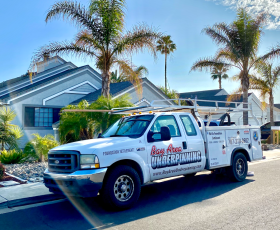How To Fix A Foundation Crack
Table of Contents
1. How To Fix Non-Structural Foundation Cracks (DIY)
2. How The Pros Fix Structural Foundation Cracks
Foundation cracks can be an alarming occurrence for any homeowner. If you see a crack in the foundation of your Bay Area home, you may assume the worst immediately. There are a lot of things that can cause these cracks to form. While the cause of some foundation cracks is the normal aging process in the home, other more serious foundation cracks may be the result of foundation movement or settlement. That is why it is important not to ignore any foundation cracks that you find in your home. But what do you do if you do not know how to fix a foundation crack?
Fortunately, there are a lot of materials available to those who are investigating foundation cracks in their homes. If the crack is small and is merely the result of aging, you may be able to fill it in and patch the area yourself. However, because many foundation cracks are an indication of structural failure, it is important to have cracks looked at by an expert and to invest in professional foundation repair if it is deemed necessary.
How to repair a foundation crack depends on the type of crack, where it is located, and what is causing it:
- Normal Aging/Settlement: Homes naturally settle as they age. Sometimes, this leads to the formation of minor cracks in your foundation. Aging concrete can also lead to small cracks. These naturally forming cracks are usually small, under 1/16 of an inch.
- Excess Moisture in Soil: If the soil under your home absorbs too much water, it will expand and push on the above foundation. This can cause the foundation to heave and develop cracks. These cracks usually worsen as foundations become less and less stable and allow water and pests to enter the home.
- Lack of Moisture in Soil: Too little moisture in the soil will cause it to shrink and compact, leading voids to form under your foundation. These voids do not offer adequate support for the concrete – as a result, the foundation sinks and may develop cracks.
- Poor Foundation Compaction: Soil that was not properly compacted when the home was built may also start to settle unevenly. This is often why new homeowners see foundation cracks and other signs of foundation failure.
These are just a few of the most common causes of foundation cracks in California. Cracks that are greater than 1/16 of an inch in width are of special concern. To know for sure whether foundation failure is the cause of your foundation crack, call Bay Area Underpinning for a free inspection today.
How To Fix Non-Structural Foundation Cracks (DIY)
If it has been determined that the crack in your foundation is not structural, you may be able to repair it yourself. Keep in mind that delaying to fix serious foundation cracks will result in more severe cracks and other foundation issues – only attempt to repair cracks yourself if you are absolutely sure that they are cosmetic and not structural. Here are some essential steps to repairing a foundation crack in your home:
- Clean the area to remove loose chips of concrete
- Mix concrete to thin paste and use latex for added flexibility
- Wet the crack slightly and apply the patching paste into the crack
- Use your trowel to scrape excess paste and smooth the finish
- Clean up tools right away to remove patching paste
If you notice that the cracks reappear after patching or that more cracks are forming, contact the foundation repair team at Bay Area Underpinning immediately.
How The Pros Fix Structural Foundation Cracks
Here at Bay Area Underpinning, we offer a few different kinds of foundation repair to stabilize your home and close foundation cracks. If the cracks in your home formed due to settlement and sinking of the concrete, we can use one of our underpinning methods to fix them. For this repair option, we drive foundation piers deep into the ground under the foundation and attach them to the foundation with brackets. Then, the piers are lifted hydraulically to raise the foundation and close cracks. The cracks can then be sealed and patched to prevent deterioration and improve the appearance of the foundation.
We also specialize in poly foam injection to lift concrete slabs. With this method, small holes are drilled into the foundation itself. Then, expansive polyurethane foam is injected into the holes, filling in underground voids and lifting the foundation as it expands. This helps re-level concrete to close gaps between cracks, which can then be patched and sealed.
If the cracks in your foundation are due to bowing or leaning basement or foundation walls (a common result of excess soil moisture and water pressure in soil), we use can utilize carbon fiber strips. These tough strips of carbon fiber are applied to bowing and cracking basement or foundation walls to provide extra strength and rigidity.
Whatever the kind of crack, let Bay Area help you find the best way to fix it – give us a call today.
More Resources
Publish Date:
Last Modified Date:

Our Locations
2333 Courage Dr. Suite C
Fairfield, CA 94533
1161 N Fair Oaks Ave
Sunnyvale, CA 94089



